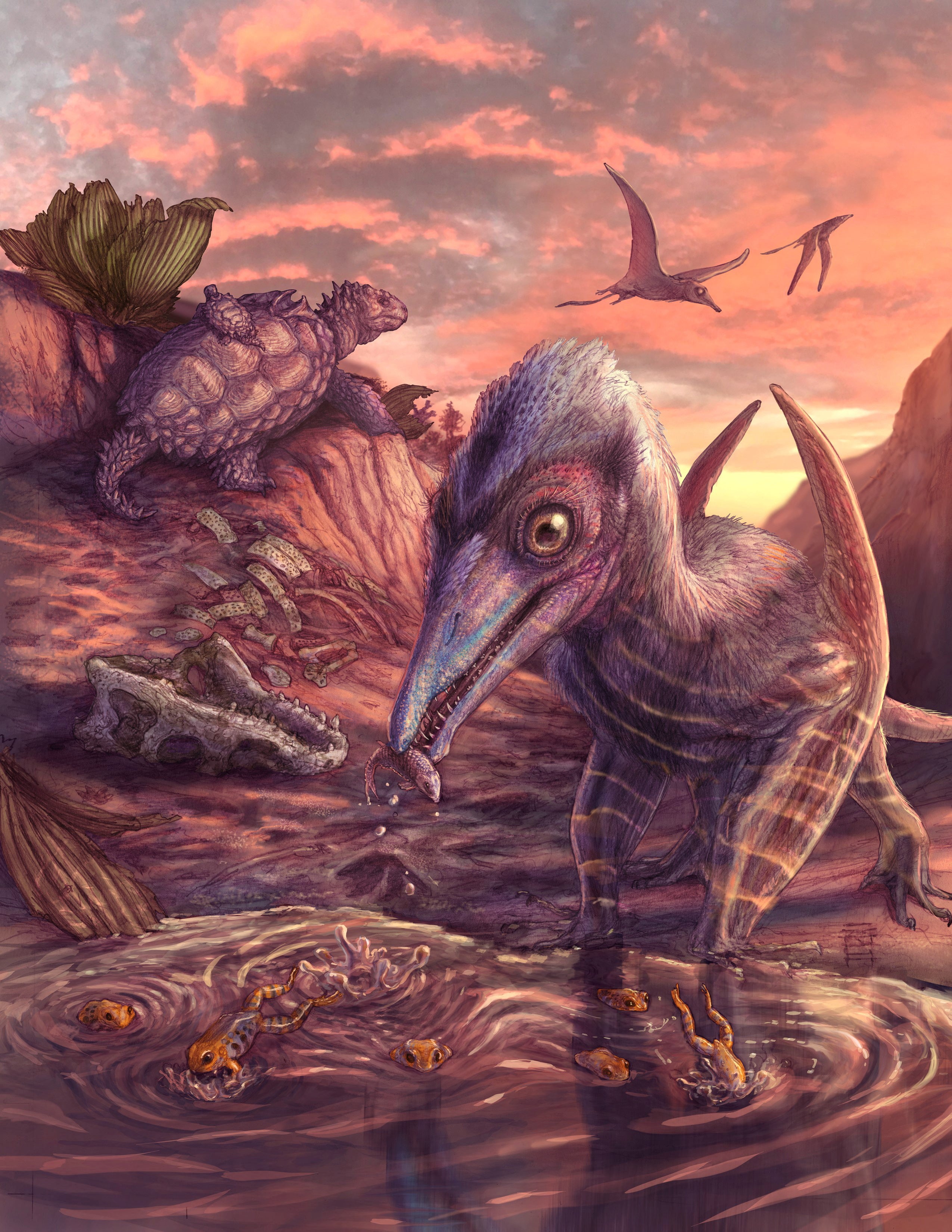Scientists in America have unearthed fossils from a number of animals, many of them previously unknown, dating back to the dinosaur era.
The newly-found fossils, including those from a pterosaur, North America’s oldest-known flying reptile, were discovered by scientists in Arizona and are 209 million years old.
The remains of the pterosaur, roughly the size of a small seagull, and the other creatures were discovered in Petrified Forest National Park, a place famous for producing fossils of plants and animals from the Triassic Period including huge tree trunks. They fossils include at least 16 vertebrate species, seven of them previously unknown.
Other new arrivals on the scene included primitive frogs, lizard-like reptiles and one of the earliest-known turtles – all of them resembling their relatives alive today. This ecosystem’s largest meat-eaters and plant-eaters were part of reptile lineages that were flourishing at the time but died out relatively soon after.
The fossils, entombed in rock rich with volcanic ash, provide a snapshot of a thriving tropical ecosystem crisscrossed by rivers on the southern edge of a large desert.
The Triassic came on the heels of Earth’s biggest mass extinction 252 million years ago, and then ended with another mass extinction 201 million years ago that wiped out many of the major competitors to the dinosaurs, which achieved unquestioned supremacy in the subsequent Jurassic period. Both calamities apparently were caused by extreme volcanism.
While it ushered in the age of dinosaurs, no dinosaurs were found in this ecosystem, illustrating how they had not yet become dominant.

“Although dinosaurs are found in contemporaneous rocks from Arizona and New Mexico, they were not part of this ecosystem that we are studying,” said paleontologist Ben Kligman of the Smithsonian Institution’s National Museum of Natural History in Washington, who led the study published in the journal Proceedings of the National Academy of Sciences.
“This is peculiar, and may have to do with dinosaurs preferring to live in other types of environments,” Kligman added.
This ecosystem was situated just above the equator in the middle of the bygone supercontinent called Pangaea, which later broke apart and gave rise to today’s continents.
Pterosaurs, cousins of the dinosaurs, were the first vertebrates to achieve powered flight, followed much later by birds and bats. Pterosaurs are thought to have appeared roughly 230 million years ago, around the same time as the earliest dinosaurs, though their oldest-known fossils date to around 215 million years ago in Europe.
The newly identified pterosaur, named Eotephradactylus mcintireae, is thought to have hunted fish populating the local rivers. Its partial skeleton includes part of a tooth-studded lower jaw, some additional isolated teeth and the bones of its elongated fingers, which helped form its wing apparatus.

Its wingspan was about three feet (one meter) and its skull was about four inches (10 cm) long. It had curved fangs at the front of its mouth for grabbing fish as it flew over rivers and blade-like teeth in the back of the jaw for slicing prey. The researchers said Eotephradactylus would have had a tail, as all the early pterosaurs did.
Eotephradactylus means “ash-winged dawn goddess,” recognizing the nature of the rock in which it was found and the position of the species near the beginning of the pterosaur lineage. Mcintireae recognizes Suzanne McIntire, the former Smithsonian fossil preparator who unearthed it.
The turtle was a land-living species while the lizard-like reptile was related to New Zealand’s modern-day Tuatara. Also found were fossils of some other reptiles including armored plant-eaters, a large fish-eating amphibian and various fish including freshwater sharks.
The ecosystem’s biggest predators were croc relatives perhaps 20 feet (six meters) long, bigger than the carnivorous dinosaurs inhabiting that part of the world at the time. On land was a four-legged meat-eating reptile from a group called rauisuchians. In the rivers dwelled a semi-aquatic carnivore from a group called phytosaurs, built much like a crocodile but with certain differences, such as nostrils at the top of the head rather than the end of the snout.
Rauisuchians, phytosaurs and some other lineages represented in the fossils disappeared in the end-Triassic extinction event. Frogs and turtles are still around today, while pterosaurs dominated the skies until the asteroid impact 66 million years ago that ended the age of dinosaurs.
“The site captures the transition to more modern terrestrial vertebrate communities,” Kligman said.



